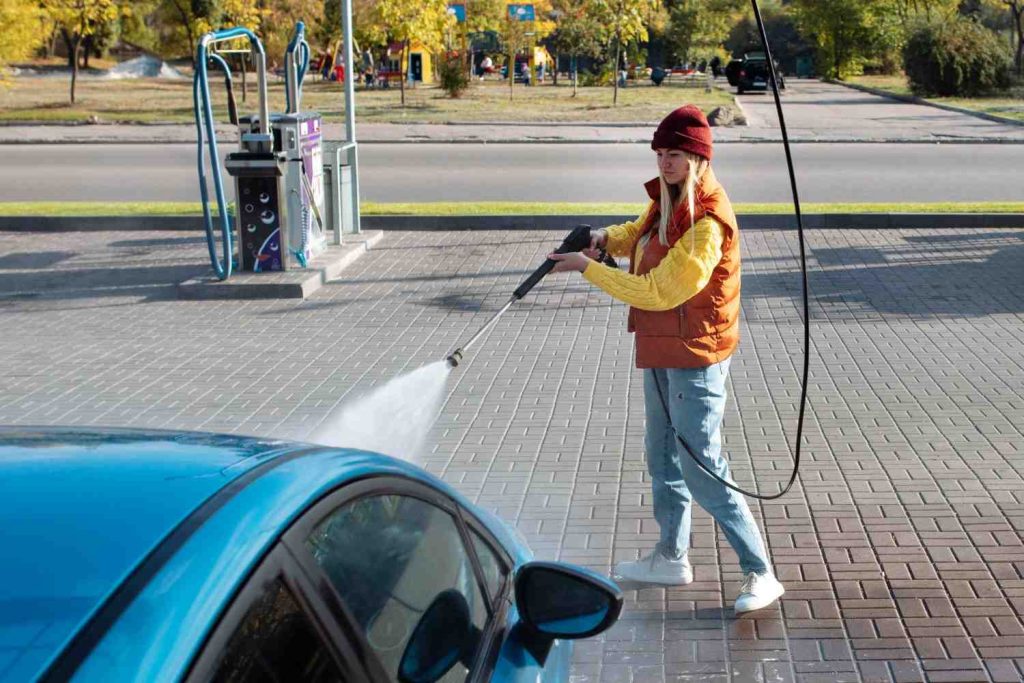
How Can Eco-Friendly Car Washing at Home Save Water and Protect Your Finish?
Washing your car at home can be both satisfying and sustainable. With a few smart choices like low‑flow tools, biodegradable cleaners, and capture‑and‑dispose methods, you can reduce water use, prevent harmful runoff, and keep your paint and trim looking great. This guide shows eco-friendly car wash techniques anyone can use, whether you’re rinsing off winter grime or doing a full detail.
Why Choose an Eco-Friendly Car Wash?
- Conserves water: The Hose and spray had traditionally wasted hundreds of gallons of water each time.
- Preserves waterways: Soaps, oil and road grime, which flow into storm drain contaminate rivers and oceans.
- Protects your finish: The light pressure cleaning keeps swirl marks and clear-coat damage hidden.
- More economical and quicker: Reduced water and focused products save time and material cost.
Supplies for an Eco-Friendly Home Car Wash
- Two buckets (one for wash solution, one for rinse)
- Bucket bottom grits (keeps the dirt off sponges/mitts)
- Microfiber drying towels and a microfiber wash mitt.
- Waterless/low water wash solution (biodegradable)
- PH neutral car wash shampoo (concentrated).
- Hose having shut off nozzle or pressure-controlled sprayer (low flow)
- Wheel cleaner and wheel separate brush or mitt.
- Crevice and trim protectant brush of soft type.
- Optional: portable water reclamation mat or water capture kit
Best Practices: Step‑by‑Step Eco‑Friendly Wash
1. Pre-Wash Preparation
- Park on an absorbent surface (gravel or grass) where there is some or place a capture mat to collect the runoff.
- Close windows, sunroof, and clean up trash in the wheel wells.
2. Rinse Smart
- Possess a low-flow nozzle/pressure-controlled sprayer. Run the water as little as possible and then open it a little to wet the surface and then shut it again till you are soaping.
- Wash downwards to rinse off the dirt.
3. Two-Bucket Wash Technique
- Bucket A: 0.1 M of shampoo and water that is pH neutral. Bucket B: rinse water. Place a grit guard in each.
- Wet the microfiber mitt in Bucket A, clean a panel and rinse the mitt in Bucket B, and reload in Bucket A. This is to prevent the reintroduction of grit and reduce the scratching.
- Part work (roof, hood, doors, rear) and shade the car to ensure that the car does not receive water.
4. Wheels Last
- Use a special brush and a special wheel cleaner. Wipe down single- do not permit the running of the wheels to form a pond in the rest of the vehicle.
- Wipe down clean screws on lug nuts, brake dust, which might need cleaners that are more vigorous, but should not have rough acids on aluminum/painted wheels.
5. Final Rinse & Dry
- Run under little water in spurts, one part to the other. Clean microfiber towels or a leaf dryer, or an air blower should be used to dry without leaving any spots of water.
- Wipe with a spray that keeps off water or a quick detailer so that you can waste less time on washing the car once again.
6. Responsible Disposing and Recycling of Water
- Where possible, pour the water into a capture mat or basin into a sewer (sink or toilet) that is usually present in your household, so that the contaminants do not reach storm drains.
- In the example of driveway washes, which do not incorporate capture equipment, you can either make an effort to minimize soapy runoff and apply biodegradable products to minimize the impact.
Water‑Saving Alternatives
- Waterless wash sprays: Effective for lightly soiled cars; use a high‑quality microfiber and follow product instructions.
- Rinseless wash systems: Use a small amount of concentrated solution in a bucket and no hose, great for urban settings and apartment dwellers.
- Mobile eco‑wash services: Many local detailers use closed‑loop systems that capture and treat wash water.

Protecting Your Finish While Being Green
- Use pH‑neutral and biodegradable products to avoid stripping wax or sealants.
- Avoid household detergents (dish soap), which remove protective coatings and increase runoff toxicity.
- Avoid direct sun or hot panels to reduce swirl marks and spotting.
- Dry with microfiber instead of chamois to reduce friction and scratching.
Tracing down Common Problems
- Persistent water spots: Use a dedicated water‑spot remover or a mild vinegar/water rinse followed by immediate drying.
- Streaks after drying: Change drying towels frequently and use a dry microfiber with a gentle, quick‑detail spray.
- Heavy grime or tar: Use a clay bar or tar remover before waxing; follow with a protective sealant to make future washes easier.
Eco Tips & Quick Wins
- Wash your car less frequently, spot clean, and use a quick detailer to maintain appearance between full washes.
- Reuse rinse water for the next bucket when it’s still relatively clean.
- Use concentrated products and dilute per instructions to reduce packaging waste and transport emissions.
- Compost or properly dispose of collected debris from filters and capture mats.
Conclusion
The home-based, eco-friendly car washing is viable and meaningful. It uses the power of low-flow tools, the 2-bucket method, biodegradable material, and proper water disposal to save water, preserve local water bodies and ensure the finish on your car is improved. Even modest, simple adjustments can make a huge impact on the environment a lower number of micro-scratches and long-term service on your car.
